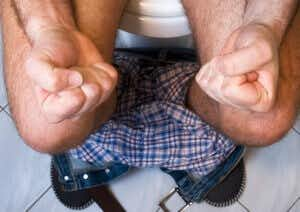
For roughly a million years our ancestors performed natural bodily functions in a squatting position. It is only in recent times that toilets have become commonplace. The first patent for a flush toilet was issued in 1775 to a British watchmaker and many would likely consider his device one of the greatest inventions of modern times. Might it have been a mistake instead?
Have Toilets Contributed to GI Grief?
Could it be that our convenient sit-down toilets have created all sorts of common digestive tract woes, including hemorrhoids, hiatal hernias, GERD (gastroesophageal reflux disease) and diverticulosis? A number of health professionals from gastroenterologists to proctologists have proposed that sitting rather than squatting may be contributing to such complications.
The Bathroom is Not a Library
Lots of people like to hang out in the loo. They have a range of reading material handy and can spend a surprisingly long amount of time reading magazines, newspapers or looking at their smart phones and answering email. But sitting on a toilet is an unnatural act for healthy elimination.
For one thing it changes the angles of the lower digestive tract in nasty ways. Without getting too graphic, let’s consider the anal sphincter and anorectal angle. In an upright standing position, there is roughly a 90 degree angle, which keeps everything where it belongs. Between our sphincter and this right angle, we generally do not have accidents
When we sit on a standard toilet, the anorectal angle remains somewhat compromised at about 100 degrees. But in a squatting position, the angle straightens out to about 126 degrees, allowing for faster, easier elimination.
The Proof of the Pooping is in the Timing
An Israeli researcher, Dov Sikirov, actually tested this concept with 28 volunteers. He had them time how long it took to have a satisfactory bowel movement while sitting vs. squatting. The squatters accomplished the task in 51 seconds compared to the sitters, who averaged about 130 seconds. Dr. Sikirov concluded:
“In conclusion, the present study confirmed that sensation of satisfactory bowel emptying in sitting defecation posture necessitates excessive expulsive effort compared to the squatting posture.”
When people sit rather than squat they frequently have to strain to overcome the restricted anorectal angle. That can lead to hemorrhoids and damage to the diaphragm, leading to hiatal hernia. That’s the conclusion of gastroenterologist Stephen Sontag, MD, writing in the Yale Journal of Biology and Medicine. He describes in detail and with illustrations why this theory makes sense.
Dr. Sontag concludes that a low-fiber diet and chronic straining:
“(a) is the cause of more than 90 percent of the GERD [gastroesophageal reflux disease] that stalks the Western world; (b) is a direct result of abandoning the popular and worldwide practice of squatting to socialize, eat and defecate; and (c) is our just reward for adopting the civilized high sitting position on chairs and modern toilets. We recommend that Western civilization seriously consider returning to some of the practices handed down to us by our ancestors.”
Here is a link to the full text version of Dr. Sontag’s article
Is Squatting the Solution to Sitting?
It is unlikely that very many people would have their toilets removed and take to squatting over a hole in the bathroom floor as is the practice in some other countries. Older people and those with back and knee problems or muscle weakness in their legs would likely find squatting extremely challenging.
Although it may not be quite as effective as traditional squatting, the Squatty Potty device offers people an alternative that allows them to sit on a traditional toilet without straining their back, knees or legs. (In the spirit of full disclosure, the makers of the Squatty Potty do advertise on our syndicated radio show.)
When you visit the Squatty Potty website, there are illustrations and a video to demonstrate the philosophy and strategy behind the Squatty Potty. In essence it improves the anorectal angle and reduces the pressure that builds up when people strain to poop.
The “Bottom” Line:
We have no way to determine whether our ancient ancestors suffered from hemorrhoids, hiatal hernias, GERD or diverticulosis. We do know that a squatting posture improves the angle of the lower digestive tract and makes for faster and more satisfying pooping. We leave it to you to determine whether you are ready to alter your bathroom habits in an attempt to improve your outcomes.

